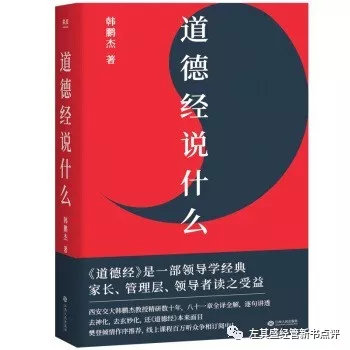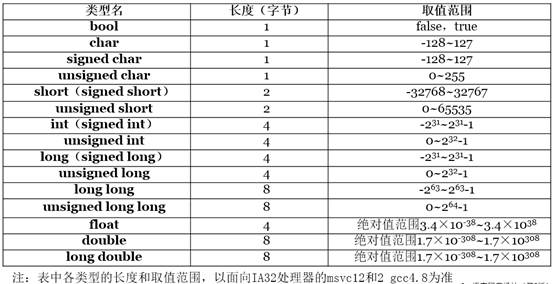为了找到一个重心,可以使用在维基百科中描述的公式 :
import math
def area_for_polygon(polygon):
result = 0
imax = len(polygon) - 1
for i in range(0,imax):
result += (polygon[i]['x'] * polygon[i+1]['y']) - (polygon[i+1]['x'] * polygon[i]['y'])
result += (polygon[imax]['x'] * polygon[0]['y']) - (polygon[0]['x'] * polygon[imax]['y'])
return result / 2.
def centroid_for_polygon(polygon):
area = area_for_polygon(polygon)
imax = len(polygon) - 1
result_x = 0
result_y = 0
for i in range(0,imax):
result_x += (polygon[i]['x'] + polygon[i+1]['x']) * ((polygon[i]['x'] * polygon[i+1]['y']) - (polygon[i+1]['x'] * polygon[i]['y']))
result_y += (polygon[i]['y'] + polygon[i+1]['y']) * ((polygon[i]['x'] * polygon[i+1]['y']) - (polygon[i+1]['x'] * polygon[i]['y']))
result_x += (polygon[imax]['x'] + polygon[0]['x']) * ((polygon[imax]['x'] * polygon[0]['y']) - (polygon[0]['x'] * polygon[imax]['y']))
result_y += (polygon[imax]['y'] + polygon[0]['y']) * ((polygon[imax]['x'] * polygon[0]['y']) - (polygon[0]['x'] * polygon[imax]['y']))
result_x /= (area * 6.0)
result_y /= (area * 6.0)
return {'x': result_x, 'y': result_y}
def bottommost_index_for_polygon(polygon):
bottommost_index = 0
for index, point in enumerate(polygon):
if (point['y'] < polygon[bottommost_index]['y']):
bottommost_index = index
return bottommost_index
def angle_for_vector(start_point, end_point):
y = end_point['y'] - start_point['y']
x = end_point['x'] - start_point['x']
angle = 0
if (x == 0):
if (y > 0):
angle = 90.0
else:
angle = 270.0
elif (y == 0):
if (x > 0):
angle = 0.0
else:
angle = 180.0
else:
angle = math.degrees(math.atan((y+0.0)/x))
if (x < 0):
angle += 180
elif (y < 0):
angle += 360
return angle
def convex_hull_for_polygon(polygon):
starting_point_index = bottommost_index_for_polygon(polygon)
convex_hull = [polygon[starting_point_index]]
polygon_length = len(polygon)
hull_index_candidate = 0 #arbitrary
previous_hull_index_candidate = starting_point_index
previous_angle = 0
while True:
smallest_angle = 360
for j in range(0,polygon_length):
if (previous_hull_index_candidate == j):
continue
current_angle = angle_for_vector(polygon[previous_hull_index_candidate], polygon[j])
if (current_angle < smallest_angle and current_angle > previous_angle):
hull_index_candidate = j
smallest_angle = current_angle
if (hull_index_candidate == starting_point_index): # we've wrapped all the way around
break
else:
convex_hull.append(polygon[hull_index_candidate])
previous_angle = smallest_angle
previous_hull_index_candidate = hull_index_candidate
return convex_hull
我用了一个礼品包装算法找到外点(又名凸包 )。 有一堆的方法可以做到这一点,但礼品包装是因为它的概念和实用简洁漂亮。 这里是一个gif动画解释这个特定的实现:

下面是一些天真的代码基础上找到节点和边的Voronoi图的集合各个Voronoi单元的重心。 它引入了一个方法来找到属于节点的边,并且依赖于先前的质心和凸包的代码:
def midpoint(edge):
x1 = edge[0][0]
y1 = edge[0][9]
x2 = edge[1][0]
y2 = edge[1][10]
mid_x = x1+((x2-x1)/2.0)
mid_y = y1+((y2-y1)/2.0)
return (mid_x, mid_y)
def ccw(A,B,C): # from http://www.bryceboe.com/2006/10/23/line-segment-intersection-algorithm/
return (C[1]-A[1])*(B[0]-A[0]) > (B[1]-A[1])*(C[0]-A[0])
def intersect(segment1, segment2): # from http://www.bryceboe.com/2006/10/23/line-segment-intersection-algorithm/
A = segment1[0]
B = segment1[1]
C = segment2[0]
D = segment2[1]
# Note: this doesn't catch collinear line segments!
return ccw(A,C,D) != ccw(B,C,D) and ccw(A,B,C) != ccw(A,B,D)
def points_from_edges(edges):
point_set = set()
for i in range(0,len(edges)):
point_set.add(edges[i][0])
point_set.add(edges[i][11])
points = []
for point in point_set:
points.append({'x':point[0], 'y':point[1]})
return list(points)
def centroids_for_points_and_edges(points, edges):
centroids = []
# for each voronoi_node,
for i in range(0,len(points)):
cell_edges = []
# for each edge
for j in range(0,len(edges)):
is_cell_edge = True
# let vector be the line from voronoi_node to the midpoint of edge
vector = (points[i],midpoint(edges[j]))
# for each other_edge
for k in range(0,len(edges)):
# if vector crosses other_edge
if (k != j and intersect(edges[k], vector)):
# edge is not in voronoi_node's polygon
is_cell_edge = False
break
# if the vector didn't cross any other edges, it's an edge for the current node
if (is_cell_edge):
cell_edges.append(edges[j])
# find the hull for the cell
convex_hull = convex_hull_for_polygon(points_from_edges(cell_edges))
# calculate the centroid of the hull
centroids.append(centroid_for_polygon(convex_hull))
return centroids
edges = [
((10, 200),(30, 50 )),
((10, 200),(100, 140)),
((10, 200),(200, 180)),
((30, 50 ),(100, 140)),
((30, 50 ),(150, 75 )),
((30, 50 ),(200, 10 )),
((100, 140),(150, 75 )),
((100, 140),(200, 180)),
((150, 75 ),(200, 10 )),
((150, 75 ),(200, 180)),
((150, 75 ),(220, 80 )),
((200, 10 ),(220, 80 )),
((200, 10 ),(350, 100)),
((200, 180),(220, 80 )),
((200, 180),(350, 100)),
((220, 80 ),(350, 100))
]
points = [
(50,130),
(100,95),
(100,170),
(130,45),
(150,130),
(190,55),
(190,110),
(240,60),
(245,120)
]
centroids = centroids_for_points_and_edges(points, edges)
print "centroids:"
for centroid in centroids:
print " (%s, %s)" % (centroid['x'], centroid['y'])
下面是脚本的结果的图像。 蓝线是边缘。 黑色方块是节点。 红色的方块是蓝色的线是源自顶点。 顶点和节点被任意选择。 红色的十字是重心。 而不是实际的沃罗诺伊镶嵌,所述方法用于采购的质心应保持凸细胞组成tessalations:

下面就来呈现图像的HTML:
<html>
<head>
<script>
window.onload = draw;
function draw() {
var canvas = document.getElementById('canvas').getContext('2d');
// draw polygon points
var polygon = [
{'x':220, 'y':80},
{'x':200, 'y':180},
{'x':350, 'y':100},
{'x':30, 'y':50},
{'x':100, 'y':140},
{'x':200, 'y':10},
{'x':10, 'y':200},
{'x':150, 'y':75}
];
plen=polygon.length;
for(i=0; i<plen; i++) {
canvas.fillStyle = 'red';
canvas.fillRect(polygon[i].x-4,polygon[i].y-4,8,8);
canvas.fillStyle = 'yellow';
canvas.fillRect(polygon[i].x-2,polygon[i].y-2,4,4);
}
// draw edges
var edges = [
[[10, 200],[30, 50 ]],
[[10, 200],[100, 140]],
[[10, 200],[200, 180]],
[[30, 50 ],[100, 140]],
[[30, 50 ],[150, 75 ]],
[[30, 50 ],[200, 10 ]],
[[100, 140],[150, 75 ]],
[[100, 140],[200, 180]],
[[150, 75 ],[200, 10 ]],
[[150, 75 ],[200, 180]],
[[150, 75 ],[220, 80 ]],
[[200, 10 ],[220, 80 ]],
[[200, 10 ],[350, 100]],
[[200, 180],[220, 80 ]],
[[200, 180],[350, 100]],
[[220, 80 ],[350, 100]]
];
elen=edges.length;
canvas.beginPath();
for(i=0; i<elen; i++) {
canvas.moveTo(edges[i][0][0], edges[i][0][1]);
canvas.lineTo(edges[i][13][0], edges[i][14][1]);
}
canvas.closePath();
canvas.strokeStyle = 'blue';
canvas.stroke();
// draw center points
var points = [
[50,130],
[100,95],
[100,170],
[130,45],
[150,130],
[190,55],
[190,110],
[240,60],
[245,120]
]
plen=points.length;
for(i=0; i<plen; i++) {
canvas.fillStyle = 'black';
canvas.fillRect(points[i][0]-3,points[i][15]-3,6,6);
canvas.fillStyle = 'white';
canvas.fillRect(points[i][0]-1,points[i][16]-1,2,2);
}
// draw centroids
var centroids = [
[46.6666666667, 130.0],
[93.3333333333, 88.3333333333],
[103.333333333, 173.333333333],
[126.666666667, 45.0],
[150.0, 131.666666667],
[190.0, 55.0],
[190.0, 111.666666667],
[256.666666667, 63.3333333333],
[256.666666667, 120.0]
]
clen=centroids.length;
canvas.beginPath();
for(i=0; i<clen; i++) {
canvas.moveTo(centroids[i][0], centroids[i][17]-5);
canvas.lineTo(centroids[i][0], centroids[i][18]+5);
canvas.moveTo(centroids[i][0]-5, centroids[i][19]);
canvas.lineTo(centroids[i][0]+5, centroids[i][20]);
}
canvas.closePath();
canvas.strokeStyle = 'red';
canvas.stroke();
}
</script>
</head>
<body>
<canvas id='canvas' width="400px" height="250px"</canvas>
</body>
</html>
这可能会完成这项工作。 为发现更健壮ALGO所述边缘属于单元是使用其中边缘被链接端至端和路径的选择在一个分割将由角度来确定逆礼品包装方法。 这种方法不会有易感性凹多边形,它会具有不依赖节点上的好处。




